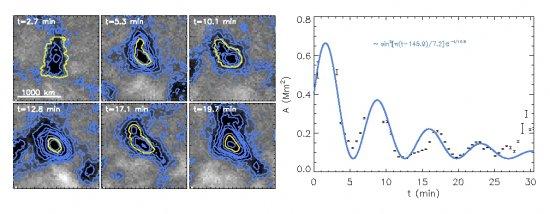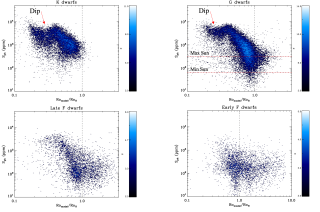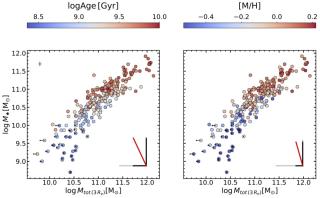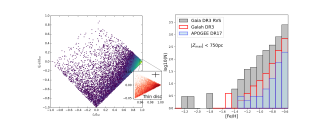As we enhance the spatial resolution and sensitivity of spectro-polarimetric measurements, it becomes increasingly evident that highly dynamic magnetic fields permeate the whole quiet Sun. These weak magnetic flux concentrations emerge somewhat preferentially in granules, where plasma motions are more favorable for the magnetic fields to rise across the solar atmosphere. Surprisingly (due to their weak nature), organized structures in the form of Omega-shaped loops survive convective motions and reach higher layers, at least the lower chromosphere (Martínez González & Bellot Rubio 2009, Martínez González et al. 2010, Wiegelmann et al. 2010). But the quiet Sun magnetism still hides many surprises. The superb quality of the Sunrise/IMaX (Solanki et al. 2010, Martínez Pillet et al. 2010) data has shown the first evidence for oscillations of magnetic flux density in the quiet areas of the Sun.
The majority of magnetic fields on the solar surface have strengths of the order of or lower than the equipartition field (300-500 G). This results in a myriad of magnetic fields whose evolution is largely determined by the turbulent plasma motions. When granules evolve they squash the magnetic field lines together amd pull them apart. Left panels of the figure show the the continous deformation of a single circular polarization patch by the surrounding plasma motions. In particular, we note that the area of patches with constant magnetic flux (yellow contour in the figure) oscillates with time, which implies that the apparent magnetic field intensity oscillates in antiphase. This is oscillation is represented in the right panel of the figure. The oscillatory pattern is evident, as well as the damping of the oscillation. The associated period is around 7 min. However, the oscillations of all patches is not the same. They have a wide range of periods which are compatible with the granular life-time. In some cases, the oscillation change abruptly, which suggests that these oscillations might not correspond to characteristic oscillatory modes of magnetic structures, but to the forcing by granular motions.
Left: time evolution of a weak circular polarization patch. The black and white background represents the magnetic flux density computed in the weak field approximation, saturated to +- 20 Mx cm-2. Blue lines represent iso-magnetic flux densities of -130,
Advertised on
References
2011, ApJ, 730, 37L



